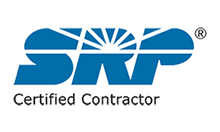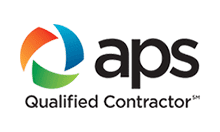Introduction
What is an air conditioner?
An air conditioner is a device that cools and dehumidifies the air in a confined space, typically a room or a building. It works by extracting heat from the indoor air and transferring it outside, resulting in a cooler and more comfortable environment. Air conditioners are commonly used in homes, offices, and other commercial spaces to provide relief from hot and humid weather conditions. They come in various types, including window units, split systems, and central air conditioning systems. Understanding how an air conditioner works is essential in troubleshooting common AC problems and ensuring optimal performance.
Importance of a properly functioning AC
A properly functioning air conditioning system is crucial for maintaining a comfortable indoor environment, especially during hot summer months. It not only helps to regulate the temperature but also plays a key role in improving indoor air quality by filtering out pollutants and allergens. Additionally, a well-maintained AC system can help reduce energy consumption and lower utility bills. Therefore, it is essential to address any AC problems promptly and ensure that your AC is functioning optimally to enjoy a cool and healthy living space.
Common AC problems
Air conditioning systems can encounter various common problems that can hinder their performance. These issues can range from a lack of cooling, inadequate airflow, strange noises, or even a complete system failure. To troubleshoot these problems, it is important to identify the root cause. Some common causes include dirty air filters, refrigerant leaks, faulty thermostats, or malfunctioning fans. By understanding these common AC problems and their troubleshooting techniques, you can effectively maintain and repair your air conditioning system, ensuring optimal performance and comfort in your space.
AC not cooling
Check the thermostat settings
One common AC problem that homeowners often encounter is incorrect thermostat settings. If the thermostat is not set properly, it can lead to issues with the AC system. To troubleshoot this problem, start by checking the thermostat settings. Ensure that it is set to the desired temperature and mode (cooling or heating). If the settings are incorrect, adjust them accordingly. Additionally, make sure that the thermostat is receiving power and is functioning correctly. By checking and adjusting the thermostat settings, you can resolve many common AC problems and ensure optimal cooling or heating in your home.
Clean or replace the air filter
The air filter in an air conditioning system plays a crucial role in maintaining the indoor air quality and overall performance. Over time, the air filter can become clogged with dust, dirt, and other pollutants, which can restrict airflow and reduce the efficiency of the AC unit. To ensure optimal performance, it is important to regularly clean or replace the air filter. Cleaning the air filter involves removing it from the AC unit and gently washing it with water or using a vacuum cleaner to remove any accumulated debris. If the air filter is too dirty or damaged, it is recommended to replace it with a new one. By keeping the air filter clean or replacing it when necessary, you can improve the airflow, enhance the cooling efficiency, and prevent common AC problems.
Inspect the condenser unit
Inspecting the condenser unit is an essential step in troubleshooting common AC problems. The condenser unit, located outside the house, plays a crucial role in cooling the air. It contains important components like the compressor, condenser coil, and fan. By visually examining the condenser unit, you can identify potential issues such as dirty coils, damaged fan blades, or blocked airflow. Regular inspection of the condenser unit can help prevent major AC problems and ensure optimal performance. If any problems are detected during the inspection, it is recommended to seek professional assistance for repairs or maintenance.
AC not turning on
Check the power supply
When troubleshooting common AC problems, one of the first things to check is the power supply. Ensure that the AC unit is properly connected to a power source and that the power switch is turned on. Additionally, check if there are any tripped circuit breakers or blown fuses in the electrical panel. If everything seems to be in order, it is also a good idea to test the power outlet with another device to rule out any issues with the electrical supply. By thoroughly examining the power supply, you can eliminate this common problem and move on to troubleshooting other potential issues with your AC unit.
Inspect the circuit breaker
When troubleshooting common AC problems, it is important to inspect the circuit breaker. The circuit breaker is responsible for protecting your AC unit from electrical overloads. Start by locating the circuit breaker panel in your home. Open the panel and check if any of the breakers are tripped or in the off position. If you find a tripped breaker, reset it by flipping it to the on position. However, if the breaker continues to trip, it may indicate a more serious electrical issue that requires professional assistance. Inspecting the circuit breaker is a crucial step in troubleshooting AC problems and ensuring the proper functioning of your cooling system.
Test the capacitor
One common AC problem that homeowners may encounter is a faulty capacitor. The capacitor is responsible for starting the motor in the AC unit, and if it is not functioning properly, the AC may not turn on or may not cool the air effectively. To troubleshoot this issue, you can test the capacitor using a multimeter. Start by turning off the power to the AC unit and then locate the capacitor. Carefully remove the wires connected to the capacitor and discharge any stored electricity by shorting the terminals with an insulated screwdriver. Set your multimeter to the capacitance setting and connect the leads to the corresponding terminals on the capacitor. If the reading on the multimeter is significantly lower than the rated capacitance, then the capacitor is likely faulty and needs to be replaced. However, if the reading is within the acceptable range, the capacitor may not be the cause of the problem, and further troubleshooting is necessary.
AC making strange noises
Identify the type of noise
When troubleshooting common AC problems, it is important to identify the type of noise your AC unit is making. Different types of noises can indicate different issues with your AC system. For example, a loud banging noise could suggest a problem with the compressor, while a high-pitched squealing noise may indicate a worn-out fan belt. By accurately identifying the type of noise, you can narrow down the potential causes and effectively troubleshoot the problem. Additionally, understanding the specific noise can help you communicate the issue more effectively to a professional technician if needed.
Inspect the fan motor
When troubleshooting common AC problems, it is important to inspect the fan motor. The fan motor plays a crucial role in the cooling process, as it circulates the air throughout the system. One common issue with the fan motor is a lack of lubrication, which can cause the motor to overheat and malfunction. To troubleshoot this problem, start by checking if the motor is properly lubricated. If not, apply the appropriate lubricant according to the manufacturer’s instructions. Additionally, check for any loose or damaged fan blades, as this can also affect the motor’s performance. If any issues are found, it is recommended to consult a professional HVAC technician for further assistance.
Check for loose components
When troubleshooting common AC problems, it is important to check for loose components. Loose components can lead to inefficient operation and even system failure. Start by inspecting the electrical connections, ensuring that all wires are securely connected. Loose wires can cause the AC unit to malfunction or not function at all. Additionally, check for loose screws or bolts in the AC unit. These can affect the stability of the components and lead to unnecessary vibrations or noise. By addressing any loose components, you can prevent potential issues and ensure the smooth operation of your AC system.
AC leaking water
Check the condensate drain line
One common AC problem that homeowners often encounter is a clogged condensate drain line. The condensate drain line is responsible for removing the excess moisture that is produced during the cooling process. Over time, this drain line can become clogged with dirt, debris, or algae, causing water to back up and potentially damage the AC unit. To troubleshoot this issue, homeowners can start by checking the condensate drain line for any visible blockages. If a blockage is found, it can be cleared by using a wet/dry vacuum or a pipe cleaner. Regular maintenance, such as cleaning the drain line and adding algaecide tablets, can help prevent future clogs and ensure the smooth operation of the AC system.
Clean the condensate pan
One common AC problem that can be easily troubleshooted is a dirty condensate pan. Over time, the condensate pan can accumulate dust, dirt, and debris, which can hinder the proper drainage of the condensate water. This can lead to water leakage and potential damage to your AC unit. To clean the condensate pan, start by turning off the AC power and removing the access panel to gain access to the pan. Use a mixture of warm water and mild detergent to clean the pan thoroughly, ensuring that all dirt and debris are removed. Once cleaned, ensure that the drain line is clear and free from any clogs. Regularly cleaning the condensate pan can help prevent water leakage and ensure the efficient operation of your AC system.
Inspect the evaporator coil
One of the common AC problems is a dirty or clogged evaporator coil. The evaporator coil is responsible for absorbing heat from the air, and over time, it can accumulate dirt, dust, and debris. This buildup restricts airflow and reduces the efficiency of the cooling process. To troubleshoot this issue, start by inspecting the evaporator coil for any visible signs of dirt or clogs. If you notice any buildup, carefully clean the coil using a soft brush or vacuum cleaner. Regularly cleaning the evaporator coil can help prevent this problem and ensure optimal AC performance.
AC emitting strange odors
Identify the type of odor
One common AC problem that homeowners may encounter is the presence of unusual odors. Identifying the type of odor can help in troubleshooting the issue. There are several types of odors that may be emitted by an AC unit, such as a musty smell, a burning odor, or a rotten egg smell. A musty smell could indicate the presence of mold or mildew in the system, while a burning odor may suggest an electrical problem. A rotten egg smell, on the other hand, could be a sign of a gas leak. It is important to address these odors promptly to prevent further damage or potential health hazards. If you notice any unusual odors coming from your AC unit, it is recommended to contact a professional HVAC technician for a thorough inspection and necessary repairs.
Clean or replace the air filter
One common AC problem that homeowners often encounter is a dirty or clogged air filter. The air filter is responsible for trapping dust, dirt, and other particles in the air, preventing them from entering the AC system. Over time, the air filter can become dirty and clogged, restricting airflow and reducing the efficiency of the AC unit. To troubleshoot this issue, it is recommended to clean or replace the air filter regularly. Cleaning the air filter involves removing it from the AC unit and gently washing it with water or using a vacuum cleaner to remove the accumulated dust. If the air filter is damaged or cannot be cleaned effectively, it should be replaced with a new one. By keeping the air filter clean or replacing it when necessary, homeowners can ensure proper airflow and improve the performance of their AC system.
Inspect the air ducts
Inspecting the air ducts is an important step in troubleshooting common AC problems. Over time, air ducts can accumulate dust, debris, and even mold, which can restrict airflow and reduce the efficiency of the system. By visually inspecting the air ducts, you can identify any signs of damage, such as leaks or loose connections, that may be causing issues with your AC. Additionally, cleaning the air ducts regularly can improve the air quality in your home and prevent potential health issues. If you notice any problems during the inspection, it is recommended to seek professional help to ensure proper repairs and maintenance of the air ducts.
If you need AC Repair services in the East Valley of Arizona including Gilbert, Mesa, Chandler, Tempe, Queen Creek and San Tan Valley Contact Dukes of Air.
Arizona’s Dukes of Air
6938 E Parkway Norte, Mesa, AZ 85212
480-773-6565











